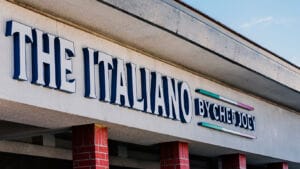The food scene in downtown Phoenix has gone to the next level and is thriving, opening up new opportunities for businesses and for people who like adventure.
According to dtphx.org, there has been a plan to help create 60 new restaurants and bars downtown since 2008. And their research shows that from 2007-2013, revenue has increased 76 percent for restaurants, hotels and retail downtown.
With this burst in business and options, downtown Phoenix has had the ability to host more conventions and events.
For instance, Arizona just hosted Super Bowl 50 in 2015 and the 2016 College Football Playoff National Championship, where fans were able to enjoy the NFL Experience, concerts and food and drinks. In addition to the locals who came to enjoy the events, 1 million visitors visited downtown Phoenix for the two mega events.
Scott Dunn, senior director of marketing and communications at Visit Phoenix said, “Without downtown’s new dining and nightlife options, those big events and conventions can’t be true crowd pleasers.”
Sparking the surge
“Downtown is starting to see an increase in businesses relocating, college expansion and increase in residents, which have naturally attracted new restaurants to cater to the new needs,” said Shawn Connelly, managing partner for DeSoto Central Market.
The ASU downtown campus, which opened in 2006, is also seen as a reason for the renewed life of downtown dining. There are more than 11,500 students downtown and those students bring new needs, wants and desires for restaurants to appease.
Five years ago, Aaron Chamberlin started the process of opening his business — Phoenix Public Market Café — which is a four-minute walk from the ASU downtown campus.
“I realized that there was a lot of things missing in the food industry, but one of them was a casual place for people to go to on a regular basis,” Chamberlin said.

Chamberlin designed the Phoenix Public Market Café so that people can go anytime to do a multitude of things, like drink beer or coffee with friends, study on their computers, have dinner with family and more.
Desaray Klimenko, a graduate student at the downtown ASU campus, has been coming downtown for more than four years. In the last couple of years, she said she not only comes downtown for school and work, but she also comes just to enjoy time with her family and friends due to the increased dining and attractions.
“I’ve seen a really huge growth in the businesses in downtown Phoenix,” Klimenko said. “So, not only restaurants, but even just like bars and places to go and see and things to do, which is awesome because I feel downtown Phoenix does have a lot of potential for growth, so it’s nice to see that we’re starting to have a lot more businesses that are mom-and-pop shops or individually owned that are starting to open up and bring in a younger crowd.”
CityScape effect
Another reason for downtown’s improved dining is CityScape. This mixed-use design brought more than 20 entertainment and dining hot spots to its location, such as Arrogant Butcher, Tilted Kilt, Lucky Strike and Stand Up Live.
Not only do people working downtown get to enjoy CityScape, but so do residents and visitors. CityScape has 224 apartments and the Kimpton’s Hotel Palomar attached to it, bringing in more people and visitors.
However, according to Dunn, most of the out-of-town visitors come downtown for conventions, sports, concerts or meetings, not so much for the dining.
“But, the evolution of the downtown dining scene and the national reputation of Roosevelt Row as a neighborhood worth checking out have certainly made downtown a must-see for visitors who come to the Valley for traditional reasons,” Dunn said.
This emerging atmosphere includes more than 38 independently owned restaurants downtown, each one with its own taste and style.
People that don’t live in Phoenix or work in downtown still perceive it the same, according to Dunn. They don’t see the multitude of independent restaurants.
“Downtown might lack the sort of ‘bug light’ conglomeration of chain restaurants that attracts less-adventuresome eaters, but people who would rather discover a restaurant than have it thrust upon them are in high cotton,” Dunn said.
And according to QSR Magazine, Phoenix was rated one of the top cities to start a new restaurant.
“I think you’ll see more of the Valley’s best chefs hanging a shingle here in the next couple of years,” Dunn said.
Increased traffic
The increase in traffic downtown has affected all business, but especially restaurants.
Brian Richards, the director of food and beverages at Blue Hound Kitchen & Cocktails, said that they have become so busy and highly recommended that people need reservations.
“Business is definitely increasing year over year, there’s no doubt about that,” Richards said. “We’ve seen a very big increase in large party dining, which is really fantastic. That means more large parties are coming downtown to not only eat, but to go to more events. We stay extremely busy.”

During summer when there aren’t as many tourists downtown, Richards said Blue Hound Kitchen & Cocktails puts up new programming to entice the locals around Phoenix.
The fact that the restaurants are within walking distance not only pleases locals downtown, but also people visiting. Anyone can walk to one restaurant for a drink, another for an appetizer and one for dinner without having to drive.
Brenda Soto Lucio has lived downtown for three years. She said that she saw an increase in small restaurants in less than a year.
“Downtown has many attractions such as bars and places to shop, but restaurants are my main reason to love it,’ Soto Lucio said. “The culture in each place is very unique.”
Dunn, who has also lived downtown for almost a decade, said he has “watched downtown transform into this simmering melting pot of urbanists and placemakers.”
Downtown Phoenix is transforming. These changes are not only bringing more people downtown, but they are providing a variety of restaurants with an extended availability as well.




